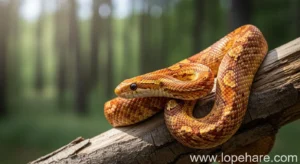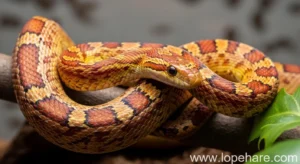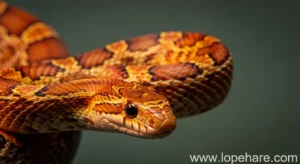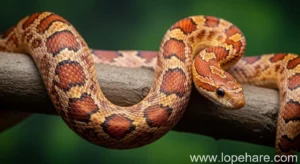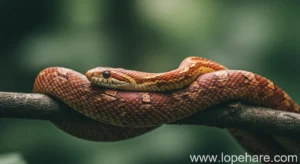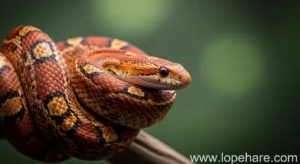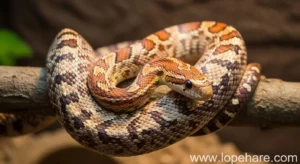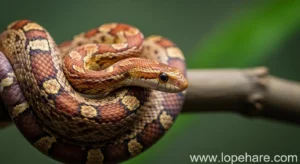The Lifespan of a Corn Snake: How to Ensure a Long and Happy Life
As editors at lopehare.com, we often receive questions from potential and current reptile keepers about the longevity of their chosen pets. When it comes to corn snakes (Pantherophis guttatus), you’ll be happy to know they are one of the longest-living snake species commonly kept as pets, known for their generally robust health and manageable care needs (relative to many other exotic reptiles, of course!). However, simply owning one doesn’t guarantee a long life; their lifespan is heavily dependent on the quality of care they receive. So, how long do corn snakes live in captivity, and what can you do to ensure your scaled companion thrives for years?
Typical Corn Snake Lifespan
In the wild, the lifespan of a corn snake is significantly shorter due to predation, environmental factors, and the challenges of finding food. Estimates typically range from 6 to 8 years.
However, in captivity, with proper care and protection from external threats, corn snakes can live remarkably long lives. It’s not uncommon for well-cared-for corn snakes to reach ages of 15 to 20 years. Some individuals have even been reported to live into their late 20s or early 30s! This potential for a long commitment is something prospective owners should seriously consider.
Key Factors for a Long Lifespan
Achieving the upper end of the corn snake lifespan spectrum relies on consistently meeting their needs. Unlike some other exotic pets we cover on lopehare.com, corn snakes are quite forgiving of minor fluctuations, but consistent, high-quality husbandry is paramount for long-term health. The most critical factors include:
- Proper Enclosure Setup
- Precise Temperature and Humidity Control
- Appropriate Diet and Feeding Schedule
- Constant Access to Clean Water
- Minimizing Stress
- Proactive Health Monitoring and Veterinary Care
Proper Enclosure Setup
A suitable habitat is the foundation of good corn snake care. The enclosure should be large enough for the snake to stretch out and explore. For an adult corn snake (which can reach 4-6 feet), a minimum of a 40-gallon breeder tank or equivalent sized plastic tub with secure locking lids is recommended. Larger is always better if space allows.
Key elements of the setup include:
- Substrate: Safe, easy-to-clean substrates like aspen shavings or cypress mulch are good choices. Avoid cedar or pine, which contain harmful oils.
- Hides: Provide at least two hides – one on the warm side and one on the cool side – so your snake can feel secure regardless of temperature needs.
- Climbing Opportunities: While primarily terrestrial, corn snakes enjoy climbing. Branches or artificial decorations can enrich their environment.
- Water Bowl: A sturdy water bowl large enough for the snake to soak in is essential.
Security First: Corn snakes are escape artists! Ensure the lid is securely fastened and weighted down if necessary. A lost snake is an endangered snake.
Temperature and Humidity Control
Corn snakes are ectotherms, meaning they rely on their environment to regulate their body temperature. Providing a temperature gradient is crucial:
- Basking Spot: 85-90°F (29-32°C) during the day.
- Cool Side: 70-75°F (21-24°C) during the day.
- Nighttime: A slight drop to 65-70°F (18-21°C) is acceptable and can mimic natural conditions.
Heating is best provided by an under-tank heater or a ceramic heat emitter controlled by a thermostat to prevent overheating. Never use heat rocks. Monitor temperatures with reliable thermometers on both warm and cool sides.
Humidity is less critical than for tropical species like chameleons, but still important. A range of 40-60% is generally suitable. This can usually be maintained with a large water bowl, and perhaps occasional light misting during shedding periods. Excessive humidity with poor ventilation can lead to respiratory issues.
Diet and Feeding Protocol
A proper diet is fundamental to a healthy corn snake. They are carnivores and should be fed appropriately sized rodents (mice or rats), which are readily available commercially frozen-thawed. Never feed live prey, as it can injure your snake.
Feeding frequency varies with age:
| Age/Size | Prey Size | Feeding Frequency |
|---|---|---|
| Hatchling/Juvenile | Pinky mouse | Every 5-7 days |
| Young Adult | Fuzzy/Hopper mouse | Every 7-10 days |
| Adult | Adult mouse / Small rat | Every 10-14 days |
The prey item should be roughly the same diameter as the snake’s thickest point. Overfeeding or underfeeding can lead to health problems, affecting lifespan.

Hydration is Vital
Unlike chameleons that require misting, corn snakes get their hydration primarily from a water bowl and from their prey. Always provide a clean bowl of fresh water large enough for the snake to submerge itself in. Change the water daily or as needed if it becomes soiled.
Stress Reduction & Handling
Chronic stress can suppress a reptile’s immune system and shorten its life. Provide plenty of hides and avoid constantly rearranging the enclosure or over-handling your snake, especially right after feeding or during shedding. While corn snakes are generally docile and tolerate gentle handling, know when to leave them be.

Preventing Common Illnesses
Many health issues in corn snakes are directly linked to poor husbandry. Proper corn snake care is your best defense against:
- Respiratory Infections: Often caused by incorrect temperature, humidity, or lack of ventilation. Symptoms include wheezing, clicking sounds, and mucus around the nose or mouth.
- Mouth Rot (Stomatitis): Can result from injuries during feeding (especially with live prey) or poor hygiene.
- Dysecdysis (Shedding Problems): Usually due to incorrect humidity. A snake should shed its skin in one complete piece.
- Parasites: Both internal (worms) and external (mites, ticks) can occur and require veterinary treatment.
Observe Closely: Get to know your snake’s normal behavior, appetite, and appearance. Early detection of subtle changes is key to preventing serious health decline.
Importance of Veterinary Care
Even with the best care, health issues can arise. Having access to a qualified veterinarian experienced with exotic reptiles is invaluable. Don’t wait until your snake is severely ill; routine check-ups can help catch problems early.
You can find resources for locating reptile vets through organizations like the Association of Reptilian and Amphibian Veterinarians (ARAV).
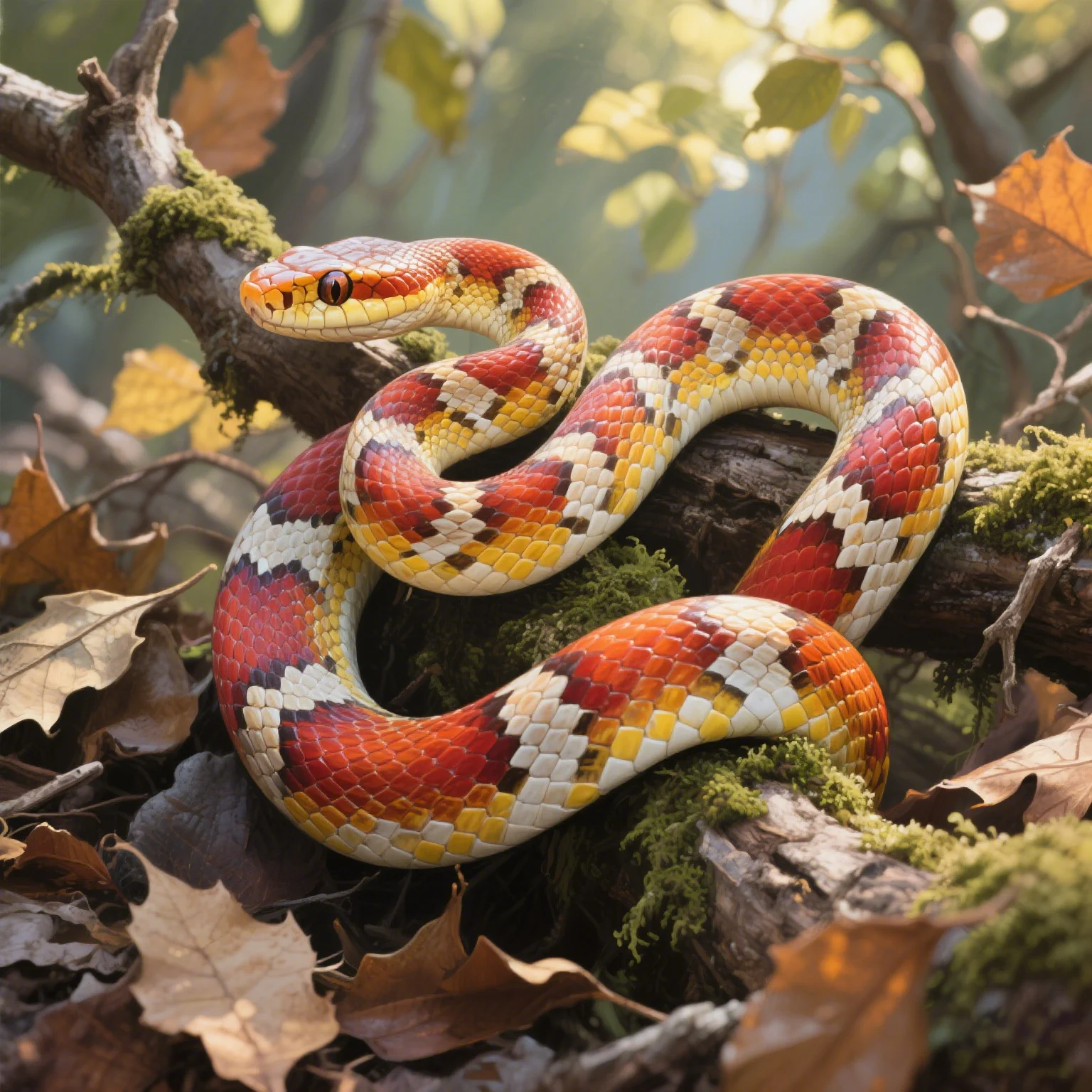
Conclusion: Investing in Longevity
A corn snake’s potential lifespan is impressive, offering decades of companionship. However, reaching that potential requires a commitment to providing consistent, high-quality care throughout its life. At lopehare.com, we believe that understanding these needs upfront is crucial for any prospective owner.
By dialing in their environment, providing a nutritious diet, ensuring hydration, minimizing stress, and being prepared for potential health issues, you are giving your corn snake the very best chance to live a long, healthy, and happy life. The effort is more than worth it for these beautiful and fascinating creatures.
References:
Information on Pantherophis guttatus species characteristics and typical behaviors adapted from Wikipedia: Corn snake.
